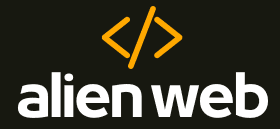23 Free AI Courses provided by Top Companies and Universities
Hey Guys, Welcome back to our new post. Here we share more than 23 AI courses that are free to learn in 2024. These all courses are provided by top Companies and Universities like Amazon, Google, Harvard, and more. We already entered into the Ai world and ignoring AI will be so bad for us and our future. So try to learn it and try how to use Ai in our daily life to complete tasks faster with Ai and also make a career in the AI future.
Here is the list of 23 Free AI Courses provided by Top Companies and Universities in the world.
1. Introduction to Generative AI
The goal of this basic-level microlearning course is to define generative artificial intelligence (AI), explain its uses, and show how it differs from more conventional machine learning techniques. To assist you in creating your own Gen AI apps, it also includes Google Tools.
Link: Click here
2. Introduction to Large Language Models
This course covers large language models (LLMs), their use cases, and how to use prompt optimization to improve LLM performance. It is an entry-level micro-learning course. It also discusses the Google tools that you can use to create your own Gen AI applications.
Link: Click here
3. Introduction to Responsible AI
This microlearning course is designed for beginners and aims to explain responsible AI, what it is, why it matters, and how Google uses it in its products. The seven AI tenets developed by Google are also introduced.
Link: Click here
4. Generative AI Fundamentals
After finishing the Introduction to Large Language Models, Introduction to Generative AI, and Introduction to Responsible AI courses, you can obtain a skill badge. You will be able to prove that you understand the fundamentals of generative AI by passing the final quiz.
Link: Click here
5. Introduction to Image Generation
Diffusion models are a family of machine learning models that are introduced in this course. They have recently shown promise in the field of image generation. Diffusion models are inspired by thermodynamics, a branch of physics. Diffusion models gained popularity in research and industry during the past few years.
Many of the most advanced image generation models and tools available on Google Cloud are based on diffusion models. You will learn about the theory underlying diffusion models in this course, along with how to train and use them on Vertex AI.
Link: Click here
6. Encoder-Decoder Architecture
A brief overview of the encoder-decoder architecture is provided in this course. It is a popular and strong machine learning architecture used for sequence-to-sequence tasks like text summarization, question answering, and machine translation. You gain knowledge about how to train and serve these models as well as the essential elements of the encoder-decoder architecture.
You will code in TensorFlow a basic implementation of the encoder-decoder architecture for poetry generation starting from scratch in the related lab walkthrough.
Link: Click here
7. Attention Mechanism
You will learn about the attention mechanism in this course. It is an effective tool that allows neural networks to concentrate on particular segments of an input sequence.
You’ll discover how attention functions and how to leverage it to enhance the efficiency of various machine-learning tasks, such as question-answering text summarization, and machine translation.
It should take you about 45 minutes to finish this course.
Link: Click here
8. Transformer Models and BERT Model
In this course, you will learn about the Bidirectional Encoder Representations from Transformers (BERT) model and the Transformer architecture. You gain knowledge of the self-attention mechanism and other key elements of the Transformer architecture, as well as how the BERT model is constructed using them.
Additionally, you discover the various applications of BERT, including natural language inference, question-answering, and text classification. It should take you about 45 minutes to finish this course.
Link: Click here
9. Create Image Captioning Models
You will learn how to use deep learning to create an image captioning model in this course. You gain knowledge about the various parts of an image captioning model, including the encoder and decoder, as well as how to train and assess your model.
After completing this course, you will be able to make your models for image captioning and use them to produce captions for pictures.
Link: Click her
10. Introduction to Generative AI Studio
This course introduces you to Vertex AI’s Generative AI Studio, a product that facilitates the prototyping and customization of generative AI models for use in applications.
This course walks you through the features and options of Generative AI Studio as well as how to use it by walking through product demos. You will take a quiz at the end to see how much you learned.
Link: Click here
11. Foundations of Prompt Engineering
You will learn the skills, methods, and best practices for creating efficient prompts in this course. Prompt engineering fundamentals are covered in this course, which then moves on to more complex prompt strategies. Along with learning how to prevent prompt misuse, you will also learn how to lessen bias when working with FMs.
Link: Click here
12. ChatGPT Prompt Engineering for Developers
You will discover how to use a large language model (LLM) to quickly create new and potent applications in ChatGPT Prompt Engineering for Developers. With the help of the OpenAI API, you’ll be able to swiftly develop capabilities that learn to innovate and add value in ways that were previously prohibitively expensive, extremely technical, or just not possible.
This quick course, led by Andrew Ng of DeepLearning.AI and Isa Fulford of OpenAI, will cover best practices for prompt engineering, explain how LLMs operate, and demonstrate how LLM APIs can be applied to a range of tasks.
Link: Click here
13. Introduction to Generative AI
The goal of this basic-level microlearning course is to define generative artificial intelligence (AI), describe its applications, and highlight its distinctions from more conventional machine learning techniques. To assist you in creating your own Gen AI apps, it also covers Google Tools.
Link: Click here
14. Introduction to Artificial Intelligence with Python – May 2023
AI is changing our way of working, playing, and living. The need for AI and machine learning specialists is expanding quickly, either by enabling new technologies like recommendation systems and self-driving cars or by enhancing more established ones like search engines and medical diagnostics. You will be able to future-proof your career and solve significant real-world problems by taking this course as a first step.
The Introduction to Artificial Intelligence with Python course in CS50 delves into the fundamental ideas and algorithms that underpin contemporary artificial intelligence, including those that give rise to handwriting recognition, machine translation, and game-playing engines. As they apply these concepts to their own Python programs, students are exposed to the theory underlying graph search algorithms, classification, optimization, reinforcement learning, and other areas of artificial intelligence and machine learning through practical projects. By the end of the course, students have gained experience with machine learning libraries and the knowledge of artificial intelligence principles necessary to create their intelligent systems.
Link: Click here
15. Basic Ai by Microsoft
The fundamentals of generative AI are covered in this course by generative AI specialist Pinar Seyhan Demirdag. Subjects covered include what generative AI is, how it operates, how to create your content, various model types, future predictions, and ethical implications.
Link: Click here
16. Introduction to Responsible AI
This microlearning course is designed for beginners and aims to explain responsible AI, what it is, why it matters, and how Google uses it in its products. The seven AI tenets developed by Google are also introduced.
Link: Click here
17. Data Science: Machine Learning
You will gain knowledge about training data and how to identify potentially predictive relationships in a set of data. You will learn how to train algorithms with training data as you construct the movie recommendation system, which will enable you to forecast results for datasets in the future. Additionally, overtraining will be covered, along with prevention methods like cross-validation. These are all essential competencies for machine learning.
Machine learning may have produced some of the most widely used data science techniques. Machine learning is different from other computer-guided decision processes in that it uses data to create prediction algorithms.
Machine learning is used in many popular products, such as spam detectors, speech recognition software, movie recommendation systems, and handwriting readers used by the postal service.
Link: Click here
18. LangChain for LLM Application Development
You will gain knowledge and experience in the following areas during this course:
- Answering Questions over Documents: apply LLMs to your use case requirements and proprietary data.
- Agents: investigate the potent new advancement of LLM as agents capable of reasoning.
- Models, Prompts, and Parsers: making calls to LLMs, offering prompts, and interpreting the answer
- Recollections for LLMs: storing dialogues and handling constrained context space
- Chains: arranging actions in a series
By the time the course ends, you will have a model that you can use to begin researching diffusion models on your own for your applications.
This one-hour course, taught by Andrew Ng and Harrison Chase, the creators of LangChain, will significantly increase the opportunities for utilizing potent language models, where you can now.
Link: Click here
19. Boost your Bing Chat
Discover the many functions that Bing Chat can carry out to simplify your workflow, from coming up with ideas and compiling information to resolving everyday office issues like making plans, setting up appointments, and interacting with colleagues.
Join Jess as she walks you through how to use Bing Chat to increase productivity. She starts by giving you a brief overview of chat AI tools and then delves into how to use them to your advantage.
You will be able to conduct thorough internet searches, come up with ideas and write text, automate tasks, double-check the outcomes, and more by the end of the course.
Link: Click here
20. Microsoft Azure AI Fundamentals: Generative AI
You can get ready for Exam AI-900: Microsoft Azure AI Fundamentals with the help of this learning path. Artificial intelligence that uses models trained to produce new, original content from natural language input is known as generative AI. Put differently, you can use everyday language to describe a desired output, and the model will generate the appropriate text, image, or even code in response.
Link: Click here
21. Generative AI Learning Plan for Decision Makers
A learning plan compiles training materials for a specific role or solution and arranges them in order of increasing difficulty. To find training that matters to you, start by using learning plans.
The purpose of this lesson plan is to familiarize technical and business decision-makers with generative AI.
An overview of generative AI, as well as guidance on planning a generative AI project and creating an organization that is prepared for generative AI, will be covered in the digital training that is part of this learning plan.
Link: Click here
22. Generative AI for Everyone
The purpose of this course is to guarantee that everyone can participate in our AI-powered future. Generative AI for Everyone, written by AI pioneer Andrew Ng, provides his distinct viewpoint on using generative AI to empower you and your work. Andrew will walk you through the principles of generative AI and what it can and cannot accomplish.
You’ll learn how to use generative AI to assist with daily tasks through practical exercises, get advice on efficient prompt engineering, and discover how to use AI for more sophisticated purposes than just prompting.
To put your knowledge into practice, you’ll get hands-on experience with generative AI tools, dive into real-world applications, learn common use cases, and obtain insight into AI’s impact on both business and society.
Link: Click here
23. Generative AI with Large Language Models
In this course you will learn about:
Learn the fundamentals, develop useful skills, and comprehend how generative AI functions. Learn how businesses are generating value with cutting-edge technology by exploring the most recent Gen AI research. Training from knowledgeable AWS AI practitioners who are currently developing and implementing AI for business use cases.
Link: Click here



Hi there, I enjoy reading through your post. I like to write a little comment to support you.